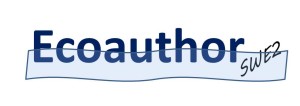How does it work?
You make clear what you wish from us by sending in a contact form.
- It can be that you have a set of raw data from your research, experiments or monitoring.
- It might be that you do already have a hypothesis or have some results from first analyses.
- It is possible that you do already have a draft manuscript.
- Anything is possible: make clear what you have and what you expect.
We will contact you to talk over your wishes and the starting material (e.g. datasets, first results, draft manuscript, etc.), and to identify if our expertise fits your needs.
If we both have the feeling that there is a nice basis for a cooperation, we will likely ask you to provide datasets and/or (if any) first results and text.
Based on your wishes and the material already there, we will provide you with an offer 〈indicative〉 consisting of:
- Proposed delivery schedule
- Our hypotheses and a proposal for a manuscript (e.g. identification of specific sections, suggested graphs, figures and tables)
- Suggestion for suitable scientific journals
- A price that generally will be divided in two (first half to be paid upon completion of the final manuscript; second half to be paid upon acceptation of the manuscript by the journal)
- Other agreements like appointments to discuss progress and findings, author sequence, tasks related to submission and communication with the journal, offprints and/or open access, communication of credits after publication.
After agreement a contract will be signed from both sides, and we start as co-authors on the task.
As indicated, all kind of partial orders for specific tasks are possible as well, as is consultation of our ecological expertise.

KvK number (Dutch Chamber of Commerce): 65611330

